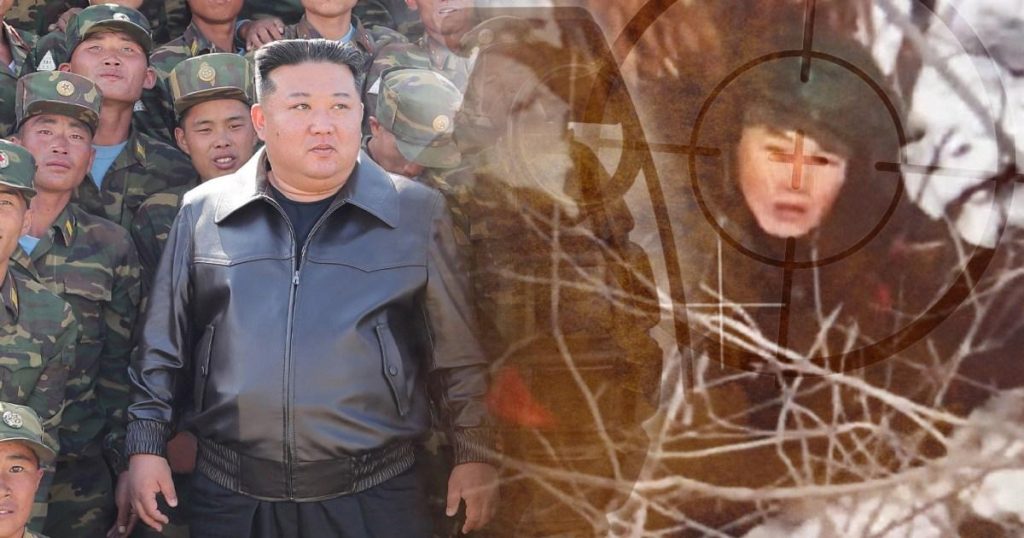Paragraph 1: The Deployment of North Korean Troops and their Disturbing Tactics
North Korean troops, dispatched by Kim Jong-un to bolster Vladimir Putin’s forces in Russia’s Kursk oblast, have exhibited a disturbing trend of choosing suicide over capture. Elite Ukrainian soldiers recount instances where these troops, cornered and facing capture, have detonated grenades, ending their own lives rather than being taken prisoner. One such incident involved a North Korean soldier shouting "General Kim Jong-un" before taking his own life as Ukrainian Special Operations Forces (SOF) closed in. These troops, estimated to number between 11,000 and 12,000, were deployed to Kursk, a region where Ukrainian forces have maintained control for five months following a daring incursion into Russia. Their presence underscores the deepening military cooperation between Russia and North Korea amidst the ongoing conflict.
Paragraph 2: The Characteristics and Mindset of the North Korean Soldiers
Ukrainian soldiers describe the North Korean reinforcements as young, disciplined, and highly motivated. Their uniformity is striking, with nearly identical haircuts, clean-shaven faces, and a well-groomed appearance. This uniformity reflects the intense indoctrination they likely underwent in their isolated homeland, contributing to their unwavering loyalty and refusal to surrender. This indoctrination, according to Ukrainian accounts, instills a mindset where death is preferable to capture, leading to the self-inflicted grenade attacks. While they employ outdated tactics reminiscent of World War II, their discipline and resilience are notable, marking a contrast to the often-reported disorganization and low morale within some Russian units.
Paragraph 3: Combat Performance and Adaptability of the DPRK Troops
The North Korean troops’ combat performance has been marked by high casualty rates, particularly due to their reliance on human wave attacks across open ground, making them easy targets for Ukrainian forces. They have also been documented employing tactics using soldiers as “live bait” to lure in and shoot down Ukrainian drones. Their lack of experience with modern warfare, especially drone technology, has contributed to their vulnerability. However, they demonstrate a capacity for adaptation, learning to recognize and evade drones over time. While initially curious about drones, they now actively try to avoid them, highlighting a degree of tactical evolution amidst the conflict.
Paragraph 4: Evidence of Concealment and High Casualties
Efforts to conceal the presence and casualties of North Korean troops have been observed, with reports of Russians attempting to burn the faces of deceased North Korean soldiers and issuing them fake documents. These actions are likely intended to mask Russia’s reliance on foreign forces and help North Korea evade UN Security Council sanctions. Ukrainian forces estimate that roughly half of the deployed North Korean troops have been killed or wounded. The high attrition rate, coupled with reported communication difficulties between the North Korean and Russian forces, has contributed to the North Koreans’ withdrawal from some areas of the Kursk region, suggesting a possible rotation of forces.
Paragraph 5: Impact of the Deployment on the Broader Geopolitical Landscape
The deployment of North Korean troops to Ukraine has significant implications beyond the immediate battlefield. It represents a deepening military partnership between Russia and North Korea, highlighting their shared interests in challenging the established international order. The combat experience gained by these troops raises concerns about their potential use in future conflicts involving North Korea. This participation in a proxy war with a NATO-backed nation could further destabilize the Korean Peninsula and escalate tensions in the region.
Paragraph 6: Concerns for the Future and the Human Cost of War
The ongoing conflict in Ukraine and the involvement of North Korean troops Underscores the complexities and far-reaching consequences of modern warfare. The disturbing accounts of North Korean soldiers choosing suicide over capture highlight the human cost of conflict and the extreme measures individuals may take under duress. The ongoing fighting, the reported high casualty rates, and the evolving tactics employed by both sides suggest a protracted and brutal conflict with potentially destabilizing consequences for regional and global security. The involvement of North Korea adds another layer of complexity to an already volatile situation, raising concerns about the future trajectory of the conflict and its potential to escalate.











